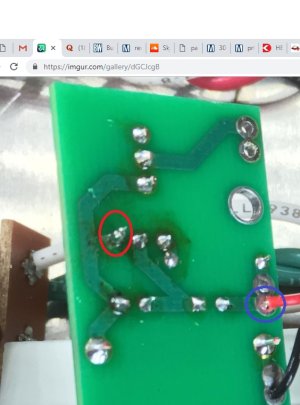I started this upgrade with an in-spec, stock Crack, which I built 1.5 weeks ago.
I just installed the smaller board of the speedball upgrade, and had two issues come up while performing voltage checks:
The voltage reading on 0B is out of spec at about 50-51 V, but all of the rest of the voltages are in spec. If it's of significance, all of the rest of the voltages are toward the lower end of the "in-spec" ranges listed in the manual.
Also, the LED closest to 1B is not lighting up. I have tried reflowing the solder on its legs, which didn't help (although maybe I need to try again?).
The three other LEDs are lighting up properly.
I'm guessing that these issues are related, but let me know what I should try, or what you think, please!
Thanks very much!
I just installed the smaller board of the speedball upgrade, and had two issues come up while performing voltage checks:
The voltage reading on 0B is out of spec at about 50-51 V, but all of the rest of the voltages are in spec. If it's of significance, all of the rest of the voltages are toward the lower end of the "in-spec" ranges listed in the manual.
Also, the LED closest to 1B is not lighting up. I have tried reflowing the solder on its legs, which didn't help (although maybe I need to try again?).
The three other LEDs are lighting up properly.
I'm guessing that these issues are related, but let me know what I should try, or what you think, please!
Thanks very much!

